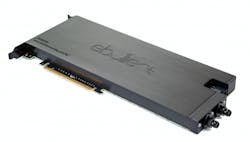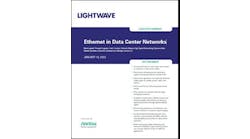Did you know that graphics processing units (GPUs) are being used more for big data workloads? Did you also know that these processors have become much more powerful in the workloads they can handle and the data they can process? Even Amazon has jumped on board with making GPU compute mainstream. AWS now deploys NVIDIA Tesla K80 cards to run a variety of applications, including traditional simulation and modeling workloads typical in the HPC market as well as the training of neural networks in deep learning and GPU-accelerated databases. In this special report from Ebullient, we learn about some next-generation use-cases around Tesla K80 cooling. Most of all, you’ll learn about new types of use-cases like powerful workload processing, big data, and even business analytics applications which require the processing power of a K80 GPU card.
Before we go on… What is a Tesla K80?
NVIDIA Tesla K80 graphics accelerator are high-performance devices featuring dual GPUs for advanced and accelerated processing.
The GPU Cooling Challenge
Download the Data Center Frontier Special Report on Liquid Cooling
Organizations deploying these GPU cards have found that Tesla K80 cooling is difficult to accomplish with traditional air cooling systems. In fact, many recent inquiries and conversation points specifically revolve around administrators struggling to keep their K80 GPUs from overheating. Here’s the reality: cooling systems like those from Ebullient are not just for high-density servers and CPUs. Ebullient’s two-phase liquid cooling systems are extremely versatile and can cool everything from Intel Xeon CPUs up to high-performance GPUs, such as NVIDIA Tesla K80 graphics accelerators. In fact, there are specific liquid cooling technologies which are designed to work with the NVIDIA Tesla card. Ultimately, this helps optimize graphics processing, creates K80 cooling best practices, and supports advanced big data workloads. This means that administrators don’t have to create complex custom cooling solutions; and should be looking at liquid cooling for their big data and next-gen GPU requirements.
Where New Liquid Cooling Systems are Revolutionizing Data Center Design
The idea isn’t just to deploy data center liquid cooling solutions. Ultimately, data center administrators want to do this efficiently; and as easily as possible. When we look at Ebullient and their cooling system, we see that it installs without any permanent modification to most server designs. This includes standard servers, and blades; as well as Open Compute Project (OCP) servers like those used by Facebook. Ebullient cooling modules replace the standard processor heat sinks and are clamped in place through existing motherboard mounting holes. From there, an Ebullient-equipped server requires only minimal air exchange, since Ebullient cooling modules absorb a majority of total server heat by vaporizing the engineered fluid, Novec 7000.
Today and moving forward, many analysts and data center professionals agree—the next-generation of data centers will have an evolved solution around keeping servers and infrastructure cool. That solution will revolve around liquid cooling technologies. As adoption continues to grow, those data centers which take advantage of these systems earlier will create competitive advantages around the workloads they host. And, they’ll create operational efficiency all while supporting advanced business use-cases.
Download this special report today to learn how next generation data centers will overcome the inherent disadvantages around air cooling through liquid cooling technologies. Most of all, you’ll understand how, representing a paradigm shift in cooling technology, these new types of liquid cooling platforms are revolutionizing hardware design, development, and digital data center deployment.






